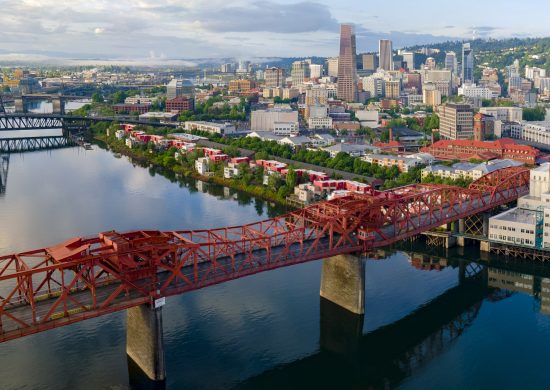
Part One (Updated 5/14/25)
The Pisces Foundation recently invited several of our partners to share insights into the past, present, and future potential of mitigating super pollutants. We are grateful for their thoughtful insights, candor, and dedication to reducing super pollutants—a critical step toward safeguarding our climate.
This is the first of a three-part series, focused on the origins and progress of super pollutants as a necessary climate solution.
Active mitigation of short-lived climate pollutants is a proven approach to rapidly reduce global warming. Half of today’s global warming is driven by these super pollutants, which include methane, black carbon, hydrofluorocarbons (HFCs), and tropospheric ozone. Super pollutants pack an outsized warming punch—with global warming potentials dozens to thousands of times greater than CO₂.
For philanthropic funders seeking maximum climate impact per dollar spent, super pollutants represent a remarkable opportunity. Unlike CO₂, which remains in the atmosphere for centuries, these pollutants persist for just days to a decade and a half, which means that action now can have an immediate impact. Many of the necessary technologies and policy frameworks already exist, slowed only by the limited resources and attention to scale them globally. And yet, addressing super pollutants remains an underfunded and underappreciated climate strategy.
The story of super pollutants is one of measured progress, with high potential for future change.
The Pisces Foundation has prioritized super pollutants as an investment area since 2014, working with partners across the globe to methodically build the case for mitigation. Over the past decade, the field has accomplished many advances in policy and practice, including the 2016 Kigali Amendment to the Montreal Protocol, the only enforceable global climate treaty, and the implementation of the Kigali Amendment through the American Innovation and Manufacturing Act, legislation signed by President Trump at the end of his first term. The next year, 2022, the U.S. Senate voted 69 to 27 to ratify the amendment. Other advances include the EPA’s 2020 announcement of a final rule on methane, which would reduce future methane emissions from the oil and gas industry by nearly 80%, and the 2021 global agreement on methane mitigation through the Global Methane Pledge at COP26.
Early days: super pollutants as a high potential idea
David Doniger, Senior Attorney and Strategist for the Natural Resources Defense Council, cites the 1970s as a key moment when work was underway to phase out chlorofluorocarbons (CFCs), which were known to be depleting the ozone layer. “We helped raise the threat in newspapers and TV and to promote aerosol bans in states and the marketplace,” he notes. The public was appalled, and soon industry and politics began to respond. But there was more to the story. “We knew early on that they were greenhouse gases too, so we got the double bonus of climate protection when phasing them out,” Doniger adds. “As climate change emerged as a greater scientific and public concern, we seized the opportunity to address the climate impacts of these super pollutants.”
Durwood Zaelke, President of the Institute for Governance & Sustainable Development, recalls when, “In 1974, Sherry Rowland, Mario Molina, and Paul Krutzen announced their findings that CFCs were destroying stratospheric ozone.” That revelation would later earn them the Nobel Prize in Chemistry. “The next year, 1975, Professor Ram Ramanathan says, ‘Hey, wait, these are super climate pollutants as well. They’re not just destroying ozone; they’re destroying the climate.’ So he was really the person who first put non-CO₂ climate forcers on the map.” Zaelke notes he was “fortunate to work with Molina and Ramanathan on many science papers,” including their seminal paper in 2009 in the Proceedings of the National Academy of Science: “Reducing abrupt climate change risk using the Montreal Protocol and other regulatory actions to complement cuts in CO₂ emissions.”
For some, the path to climate advocacy and super pollutant mitigation was shaped by personal experience and community impact. For Sarah Ann Smith, Program Director for the Global Methane Hub, the journey started with a deep concern for her community’s health.“Growing up, I observed rising rates of asthma, cancer, and other health problems in my community,” she recalls. This observation sparked her interest in finding a way to protect human health while simultaneously addressing climate change. When the Clean Air Task Force asked her to help build a coalition in the U.S. advocating for federal methane pollution standards, she saw it as an opportunity to make a real difference. “I left my toxic-chemicals-focused role at the EPA and jumped at the opportunity,” she says, knowing that tackling pollutants like methane and black carbon could help mitigate both public health risks and climate impacts.
By the 2000s, super pollutants like methane and black carbon became increasingly recognized in climate action discussions. “Super pollutants gained attention for their outsized near-term warming effects and potential health impacts,” says Rachel Muncrief, Executive Director of the International Council on Clean Transportation (ICCT). “Black carbon was identified as a driver of Arctic ice melt, while methane was recognized as a potent greenhouse gas and ozone precursor. Researchers and environmental groups advocated cutting these emissions to reduce their immediate climate impacts and buy time for long-term CO₂ reductions.”
Challenges along the way, and key players stepping up
“As recently as six years ago, many states were just starting to understand what HFCs were,” reflects Taryn Finnessey, Managing Director, U.S. Climate Alliance. “And they were just starting to think about methane reduction outside the oil and gas space.” As awareness has grown, policymakers have found opportunities to more deeply engage on these issues. Once they see the opportunities and impact, they feel they can effect change. Initially, education was necessary, but then the states got creative.

Meanwhile, research and policy initiatives were growing to provide a clear scientific basis for effective advocacy. “The ICCT and others provided crucial research and policy recommendations,” Rachel Muncrief notes. She points to the evolution of aviation research as an example, beginning with the 1999 Intergovernmental Panel on Climate Change (IPCC) report, “Aviation and the Global Atmosphere.” This report helped set the stage for ongoing research on short-lived climate pollutants from aviation. According to Muncrief, James Hansen’s early work on black carbon was critical to the growing recognition of the role of short-lived pollutants in global warming, as were the contributions of Tami Bond, who in the early 2000s systematically quantified black carbon’s climate impacts, earning a MacArthur Foundation genius grant for her work. In the global effort to combat super pollutants, the Climate & Clean Air Coalition (CCAC) emerged as an influential international champion. Muncrief explains that the CCAC not only supported scientific research but also helped drive practical initiatives aimed at reducing super pollutants.
In the mid-2000s, the focus on super pollutants gained further traction in the context of international treaties. Durwood Zaelke reflects on the evolution of the Montreal Protocol: “In 2006 and 2007, IGSD led a campaign to turn the Montreal Protocol from a treaty that did ozone protection as its primary goal with climate as a side dish that no one even talked about to one that made climate explicit as one of the goals. During the George W. Bush administration, we launched a successful campaign to accelerate the phase-out of HCFCs, which were replacements for the CFCs. The benefit for the climate was greater than the Kyoto Protocol climate agreement, which Bush had exited. The headline in the Montreal Gazette read, ‘U.N. Hails Historic Ozone Pact.’ Achim Steiner, then head of UNEP, said ‘It’s perhaps the most important breakthrough in an environmental negotiation process for at least five or six years.’ Even President Bush weighed in, noting ‘This accelerated phase out will bring larger benefits because it will dramatically reduce greenhouse gas emissions. We have seen what happens when we come together to work for a common cause, and we can do it again.”
Signs of progress in policy, science, and public awareness
Driven by scientific advances, policy leadership, and innovative technology, the global effort to reduce super pollutants has evolved from local progress to international milestones, showing that meaningful progress is not only possible but already underway.
Colorado was a trailblazer in methane regulation, becoming the first state to adopt oil and gas measures. The state took a comprehensive approach with early industry engagement to find an effective, efficient way to reduce greenhouse gas emissions, improve air quality, and advance its climate goals. The success of Colorado’s programs demonstrated that regulating methane was possible. From that point on, according to Taryn Finnessey, states became much more open to that kind of regulatory framework, and it has been improved numerous times—and has even been scaled up to the federal level.
Scientific research, including that by V. Ramanathan, who led UNEP’s Atmospheric Brown Cloud program, has been equally instrumental in shaping national and international responses to super pollutants. “Seminal research by leading scientists, including James Hansen, Tami Bond, and A.R. Ravishankara, laid the groundwork for forming the CCAC in 2012,” notes Sarah Ann Smith. The CCAC became an important international platform for addressing super pollutants, with 92 state partners and numerous non-state actors. “It has produced pivotal research, including the influential “Global Methane Assessment,” authored by Drew Shindell and others.” This assessment helped form the technical foundation for the Global Methane Pledge, a milestone policy commitment launched at COP26. “The Global Methane Pledge helped put super pollutants on the policy map,” Smith explains, underscoring the importance of international cooperation and funding to advance the issue.
In the transportation sector, new scientific insights have driven both innovation and regulation. “In aviation, there is a lot of new science around contrails,” explains Rachel Muncrief, referring to the cloud-like vapor trails produced by aircraft exhaust. These contrails trap heat in the atmosphere, contributing to global warming. “Contrail-avoidance technology is being developed, and airlines in the U.S. and European Union (E.U.) have conducted real-world flight trials of avoidance maneuvers,” Muncrief shares. Additionally, a major policy milestone occurred in 2025 when the E.U. implemented its first monitoring, reporting, and verification (MRV) regulation to track non-CO₂ emissions from aviation. “Public awareness received a boost at COP29, when the conference’s first-ever event focused specifically on contrails highlighted avoidance strategies as cost-effective climate mitigation measures,” Muncrief adds.
Isella Ramirez, Executive Director of Moving Forward Network, reflects on local policy successes as another key marker of progress. In Southern California, the Clean Truck Program at the San Pedro Bay Ports led to significant reductions in diesel particulate matter. “As a result of the Clean Truck Program, the San Pedro Bay Ports banned pre-1989 trucks,” said Ramirez. “Soon after, they implemented a ban on all trucks that could not meet the 2007 emissions standards by 2012. Seventeen years later, diesel particulate matter from heavy-duty trucks in and around the port complex decreased by more than 95%. When science supports local lived experiences and is layered with health-protective policy and effective communications, progress is attainable.”
 Durwood Zaelke points to the Kigali Amendment—an international agreement under the Montreal Protocol aimed at phasing down HFCs—as one of the most significant global achievements in reducing super pollutants. “It took a long time, but we got the Kigali Amendment, which will avoid the single biggest piece of climate warming, up to half a degree Celsius. We had a series of peer-reviewed papers on this, and the first one calculated that the Montreal Protocol had avoided more warming than CO₂ is causing. Think about that. The Montreal Protocol is avoiding more warming than CO₂ is causing. It’s remarkable that the Montreal Protocol has saved us from going over the cliff of tipping points. It is the model the world needs to follow for a mandatory methane agreement.”
Durwood Zaelke points to the Kigali Amendment—an international agreement under the Montreal Protocol aimed at phasing down HFCs—as one of the most significant global achievements in reducing super pollutants. “It took a long time, but we got the Kigali Amendment, which will avoid the single biggest piece of climate warming, up to half a degree Celsius. We had a series of peer-reviewed papers on this, and the first one calculated that the Montreal Protocol had avoided more warming than CO₂ is causing. Think about that. The Montreal Protocol is avoiding more warming than CO₂ is causing. It’s remarkable that the Montreal Protocol has saved us from going over the cliff of tipping points. It is the model the world needs to follow for a mandatory methane agreement.”
“The biggest marker of progress—the throughline between what happened in the first Trump Administration and then what happened in the Biden Administration—was state policy,” said Kareem Hammoud, Industry Policy Advisor, for the U.S. Climate Alliance. States were instrumental in driving forward regulations for HFCs and methane, filling gaps left by federal inaction. This state-level action ultimately paved the way for the passage of the AIM Act, which addresses HFCs, and laid the foundation for federal methane regulations. “More than a dozen States were in the process of adopting, or had fully adopted, some sort of regulation to handle HFCs in the absence of a federal rule,” he notes. “On the methane side, the earliest ambitious methane emission standards on various sources, whether oil and gas or landfills, started at the state level, and went beyond the federal floor.”
Technology has played a crucial role in facilitating these advancements. “Emerging technologies have made the implementation and execution of many of these regulations on both methane and HFCs easier, “ Taryn Finnessey explains.
Finally, the Biden administration’s commitment to addressing methane marked another important step forward. “The final NDC [Nationally Determined Contribution–a climate action plan submitted to the U.N.] for 2035, developed and released by the Biden administration, included a methane-specific target,” says Kareem Hammoud. “That’s a first for the U.S. and one of the first internationally.”
Stay tuned for Part 2, where we’ll continue highlighting our partners’ perspectives on the evolving landscape of super pollutant mitigation and the path ahead.
Contributors:
- David Doniger, Senior Attorney and Strategist, Climate & Energy
Natural Resources Defense Council - Taryn Finnessey, Managing Director
Kareem Hammoud, Policy Advisor, Industry
U.S. Climate Alliance - Rachel Muncrief, Executive Director
The International Council on Clean Transportation - Isella Ramirez, Executive Director
Moving Forward Network - Sarah Ann Smith, Program Director, Energy
The Global Methane Hub - Durwood Zaelke, President
Institute for Governance & Sustainable Development



